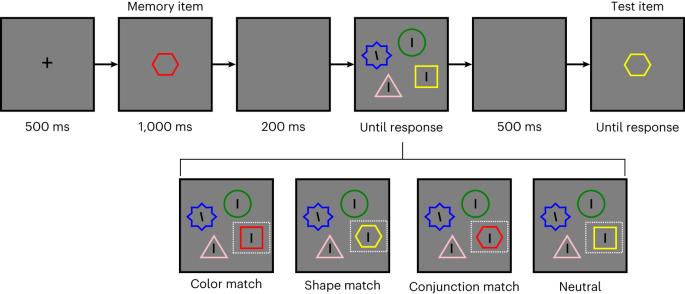The dynamic process of hyperfocusing and hyperfiltering in schizophrenia
IF 8.7
引用次数: 0
Abstract
Schizophrenia is typically characterized by impairments in selective attention. However, recent evidence seems to counterintuitively show that people with schizophrenia (PSZ) exhibit superior attentional selection compared with healthy control subjects, an intriguing phenomenon known as hyperfocusing. Such supranormal attention is believed to underlie multiple kinds of cognitive impairments observed in PSZ, and thus exploring this remarkable phenomenon holds promise for inspiring innovative treatments aimed at addressing cognitive deficits in PSZ. Here, in this case–control study comprising four independent experiments, we aimed to investigate two central questions regarding this phenomenon. First, we sought to investigate whether hyperfocusing on the relevant information would be accompanied with hyperfiltering on irrelevant information, by adopting tasks wherein participants were asked to focus on one feature (that is, color) of an object while ignoring another (that is, shape). Another important objective is to understand how such supranormal attention unfolds over the course of cognitive processing by manipulating the time course. Our research reveals that hyperfocusing on relevant information coincides with greater filtering (that is, hyperfiltering) of irrelevant information from the same object. Additionally, our research shows that hyperfocusing develops through continuously enhancing the relevant information and progressively weakening the irrelevant information over time. Crucially, these key findings are replicated and generalized across different designs and research paradigms, underscoring the robustness and replicability of our study. These convincing findings extend our understanding of cognitive mechanisms behind hyperfocusing. Hyperfocusing in schizophrenia is accompanied with hyperfiltering of irrelevant information over time.

精神分裂症患者过度聚焦和过度过滤的动态过程
精神分裂症的典型特征是选择性注意力障碍。然而,最近的证据似乎反直觉地表明,与健康对照组相比,精神分裂症患者(PSZ)表现出了超常的注意选择能力,这种现象被称为 "超聚焦"(hyperfocusing)。这种超常的注意力被认为是在 PSZ 中观察到的多种认知障碍的基础,因此探索这一显著现象有望激发旨在解决 PSZ 认知缺陷的创新治疗方法。在这项由四项独立实验组成的病例对照研究中,我们旨在探究有关这一现象的两个核心问题。首先,我们试图研究过度关注相关信息是否会伴随着过度过滤无关信息,具体方法是要求参与者关注物体的一个特征(即颜色),同时忽略另一个特征(即形状)。另一个重要目的是通过操纵时间进程来了解这种超常规注意力是如何在认知加工过程中展开的。我们的研究发现,对相关信息的过度关注与对同一对象的无关信息的更大过滤(即过度过滤)相吻合。此外,我们的研究还表明,随着时间的推移,超聚焦是通过不断增强相关信息和逐渐削弱无关信息而发展起来的。最重要的是,这些关键发现在不同的设计和研究范式中都得到了重复和推广,突出了我们研究的稳健性和可复制性。这些令人信服的发现拓展了我们对过度聚焦背后认知机制的理解。精神分裂症患者的过度集中伴随着随着时间推移对无关信息的过度过滤。
本文章由计算机程序翻译,如有差异,请以英文原文为准。
求助全文
约1分钟内获得全文
求助全文

 求助内容:
求助内容: 应助结果提醒方式:
应助结果提醒方式:


